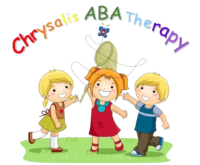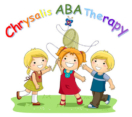ABA Therapy or the applied behavioral analysis approach is widely accepted and utilized by a various medical advocate to help kids with Autism spectrum disorder alleviate or decrease negative behaviors such as repetitive actions, self-injurious and aggression acts. The therapy is created and developed by the two Psychologist in 1970’s. The main core of the approach is to enhance favorable behavior thru positive reinforcement. The two psychologists explained that when a child’s particular behavior is being praised, it is more likely to be repeated. In addition to this, whenever a child acts unfavorably, the approach is to correct it. Since the creation of the therapy started and was applied to various children, there is significant increase of IQ while their skills improved as well during their 1987 clinical trials. Since then, many health advocates and experts were involved in developing and expanding the said therapy.
The ABA Therapy today
Nowadays, the Aba therapy is still used as the king of all treatment approaches to children who are in ASD and other related developmental delay conditions. Researchers and experts are working hand in hand and even expanded it by creating various types which involve different approaches and techniques.
- Functional Analysis is a form of assessing the child’s behavior to be able to gather essential information that figures out the cause of a particular problem behavior to the child. It will help the therapist what specific activity or approach that needs to be applied to the child.
- Behavior Mapping is a visual representation of the child’s activity, actions that need to be done in a given situation and a consequence whenever the child behaves otherwise. The map will serve as a guide to the child that whenever he respond inappropriately, there will be a consequence that will be given to him. On the other hand, whenever he behaves favorably, the child will be rewarded.
- Sensory Strategies suggests usage of our sensory such as a sense of touch, smell, hearing, and sight. The sensory strategy approach is one of the effective tools in Aba Therapy that allows the child to be exposed to a particular stimulus like walking with the barefoot on the sand, touching a hot and cold water among others.
- Pivotal Response Training is one of the best therapy that is based on the applied behavioral Analysis approach because it is a form of play activity that is initiated by the child. The goal of this method is to enhance the child’s social skills, able to respond to cues that are given by the therapist and improve communication by constant motivation.
- Advanced Play Skills is to promote initiation of the child’s enthusiast to play with other kids. The approach is progressive which includes simple to complex play activity. Initially, the child is given a toy for him to identify, then the next stage the child will be provided an object that is separated like a puzzle. Typically, the therapist will assess the level of the child’s developmental level and start from there.
- Differential Reinforcement is an approach that blocks the negative behavior of a child by directing them to the right response. One of the examples of the differential reinforcement is when a child impulsively takes a toy without asking; the therapist will hold the child’s hand and firmly say the word “borrow or ask”. When the child utters the word or simply follows the gestures that the therapist acted, the toy will be given to him graciously.
ABA therapy helps not only the child in the spectrum but the parents and every family member to understand various types of approach that they can use at home.

